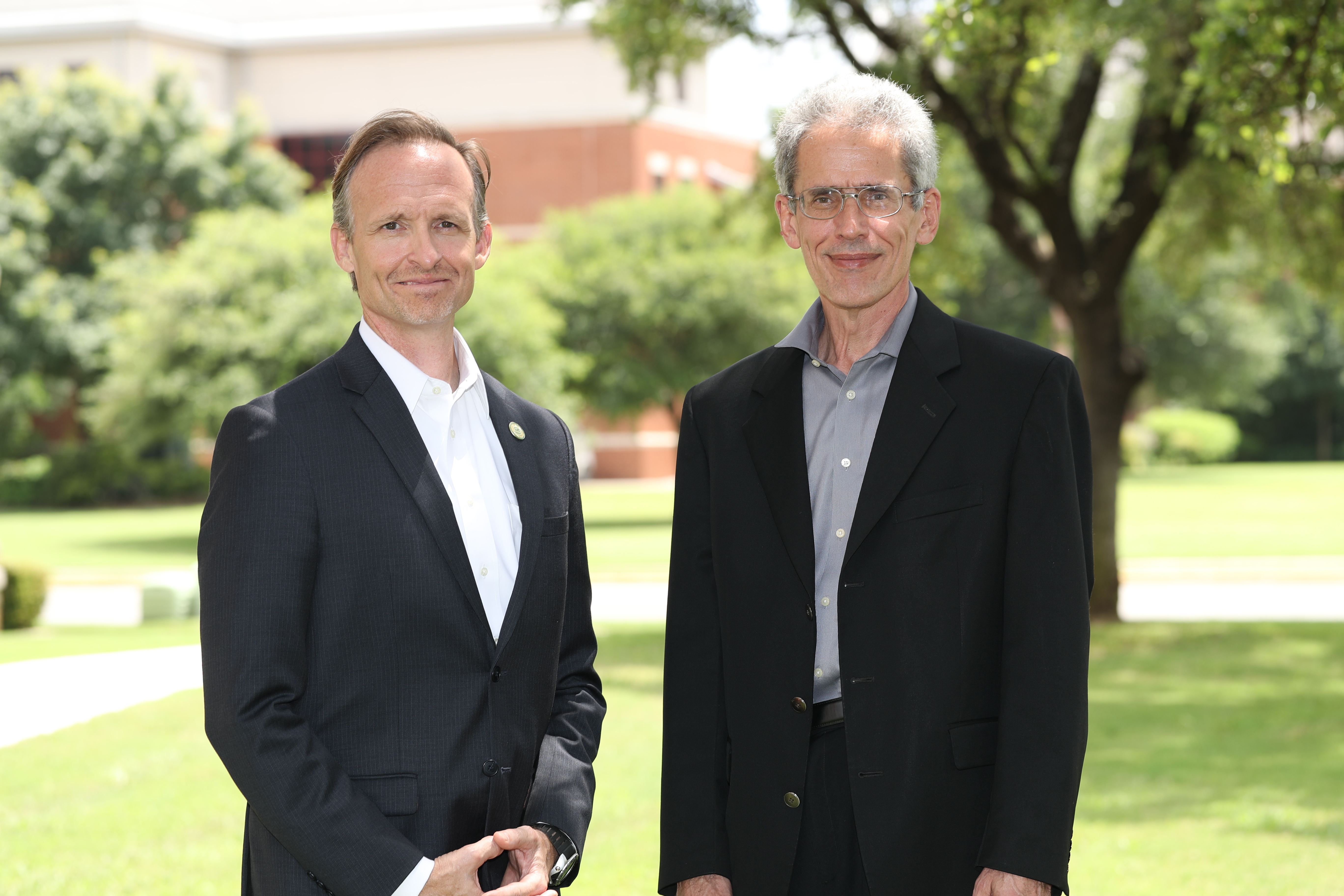Department of Public Safety’s New Policy Aimed at Creating Safer Roadways for the Baylor Campus Community

Mark G. Childers, associate vice president of public safety and security for Baylor's Department of Public Safety and Baylor Police Chief Brad Wigtil. (Baylor Photography/Robert Rogers)
Media Contact: Tonya B. Hudson, 254-710-1964
Follow Baylor Media and Public Relations on Twitter: @BaylorUMedia
WACO, Texas (Jan. 31, 2019) – Baylor’s Department of Public Safety recently approved a new Traffic, Transportation and Parking Policy for the University. One of the most notable inclusions in the policy is the prohibition of texting while driving or cycling on campus unless hands-free technology is used.
Already a law under the Texas Transportation Code, no texting while driving is now an offense on Baylor’s roadways as well and may result in a Baylor citation.
“Our goal as Baylor’s Department of Public Safety is to continuously work to enhance safety at the University. We are constantly seeking opportunities to create a safer campus environment from law enforcement to technical security to emergency preparedness to fire prevention,” said Mark G. Childers, associate vice president of public safety and security.
According to the Centers for Disease Control and Prevention, each day in the United States, approximately nine people are killed and more than 1,000 injured in crashes that are reported to involve a distracted driver.
With the staggering statistics associated with distracted drivers, Baylor Police Chief Brad Wigtil said it was imperative that the new policy addresses that potential danger.
“With the new policy, we wanted to make sure we focused on cellphone use and mirror Texas law in that regard,” Wigtil said. “Safety of the overall campus community is our main priority and the Traffic, Transportation and Parking Policy is an extension of that. It is another tool at our disposal to help us ensure the safety of the campus community.”
Other aspects of the traffic policy include a reduced speed limit of 20 mph on campus roads, along with the regular rules of the road applying to Baylor streets.
Additionally, bicycle safety is another priority area of the policy. Since the spring of 2018, bike registration has been mandatory at Baylor. A streamlined process at www.baylor.edu/bike helps facilitate registration, making it simple and quick, said Matt Penney, director of parking and transportation services.
“You take a picture of the side of the bicycle,” Penney said. “You click a picture of the serial number, which is usually underneath the pedals. Then, you send those pictures to bike@baylor.edu. We will complete the registration, and then prepare a registration decal for you to pick up.”
Cyclists also are required to follow the rules of the road in accordance to the Texas Transportation Code, which includes not riding a bicycle on sidewalks, ramps and patios unless there is a designated bicycle path or lane. Bicycles are not allowed to be parked or stored at the entranceways, stairs, ramps or railings. Violating traffic rules could result in a Baylor citation for cyclists.
“It is really important for cyclists to understand the importance of riding and parking their bikes on campus. We want to make sure that all of the pathways are accessible to those with disabilities and pedestrians,” Penney said.
View the Traffic, Transportation and Parking Policy here.
ABOUT BAYLOR UNIVERSITY
Baylor University is a private Christian University and a nationally ranked research institution. The University provides a vibrant campus community for more than 16,000 students by blending interdisciplinary research with an international reputation for educational excellence and a faculty commitment to teaching and scholarship. Chartered in 1845 by the Republic of Texas through the efforts of Baptist pioneers, Baylor is the oldest continually operating University in Texas. Located in Waco, Baylor welcomes students from all 50 states and more than 80 countries to study a broad range of degrees among its 12 nationally recognized academic divisions.